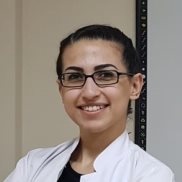
Biography
Biography: Pelin Kuzucu
Abstract
The nervous system develops from the neural plate at the 3rd week. Neural folds close along the line, approaching each other along the middle line. As a result of these events, the neural tube is formed. Neural tube defects are formed in the first four weeks of life by factors affecting the embryo.The closure defects of the anterior neuropore lead to anencephaly and encephalocele, of the posterior neuropore, on the other hand, cause spina bifida, meningocele and meningomyelocele. Spinal cord is located at the level of the S1 vertebra in the 6-month-old fetus, at the level of L2-3 vertebrae in newborns and L1 terminates at the inferior border of the vertebra in adults. Spina Bifida Occulta: It is the mildest form-it usually does not give symptoms. It is congenital that the spinous process and the arcus vertebrae are not formed in one or, rarely, in more than one vertebra, but the spinal cord and spinal nerves are normal. There is no herniation of the meninges. Chiari II or hydrocephalus is not observed. On the skin there may be: Hairy structure, Dermal sinus, Dimple, Hemangioma, Lipoma. Myelomeningocele: The skin, vertebrae, nerve roots, spinal cord, meninges are affected. Incidence 2-3/1000 live births. Most have a lumbosacral or lumbar placement. MMS structure gets intruded. Meningocele: ıt is a rare type. The closure of the vertebral arch is not complete. It often occurs in the lumbosacral region. There is usually no neurological deficit. Tethered cord: The most common causes are diastemetamyelia, short and thick phylum terminale, intradural lipoma, lipomyelomeningocele and adhesions that develop after meningomyelocele surgery, and the fact that the subject's medullaris is located below the level of the L2 vertebra. progressive spinal deformities such as skin symptoms, motor deficits, Foot deformities, Urological symptoms, Kyphosis, Scoliosis are clinically encountered.

